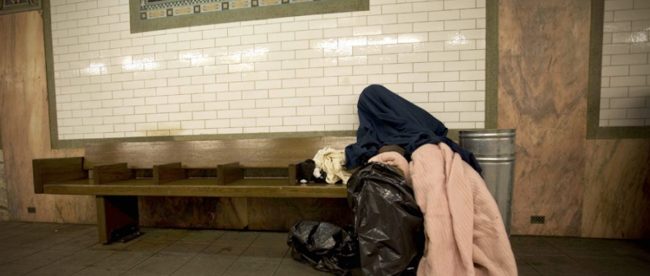Why New York City May Pay You to Pretend to be Homeless

According to official estimates, there are about 77,000 homeless people living in New York City. The vast majority of that number — about 73,000 — are considered “sheltered,” which is to say that they’re typically living in city- or state-provided temporary housing of some sort, but don’t have a permanent address of their own. That number is relatively easy to count, as officials can walk around the facilities and tally up the number of people.
The same can’t be said for the remainder, though. The official “unsheltered” number — about 3,900 — typically refers to the population of people who sleep on the street, in parks, in subway stations, etc. Counting that population is difficult. Not only do you have to visit every nook and cranny of the city on the same night, but those doing the count may easily miss people huddled away in the dark. It’s very easy to miss a large number of homeless, even when you’re actively trying to measure the population.
And yet, getting an accurate count is critical. Most of the resources available to the homeless population are provided by the government, and if the government can’t estimate how many people are in need of those resources, that’s a problem. A too-small count means not enough shelters or meals; a too-large count leads to wasted resources — resources which could have gone to help other people, or to assist the homeless in getting back on their feet. (The money spent on an unused bed could have been spent on much-needed medicine or a literacy course for the person sleeping one bed over.)
So how did the city account for this? By paying formerly homeless people $85 to pretend to be homeless. But just for one night.
The City of New York conducted its census of “every New Yorker sleeping on the street,” called “Homeless Outreach Population Estimate” or HOPE, on January 22nd of this year. That night, volunteers took to the streets to count the homeless population. But before they did so, the city’s Department of Homeless Services (DHS) hired roughly 200 people to pretend to be homeless themselves, finding places to “sleep” somewhere in the city. These temporary workers are given some guidelines and training so they know how to appropriately pass off as someone affected by homelessness, but as many of them were previously in that situation, they already have a good idea as to what to do.
Then, at about midnight, the canvassers take to the streets, approaching apparently homeless people and asking them if they have a place to live (to both get them help and to confirm their status as homeless). If a canvasser comes across someone who is truly “unsheltered,” he or she tries to get the homeless person some help and offers the affected a spot at a shelter. If the volunteer comes across a decoy, though, the decoy reveals the truth and goes home, and the canvasser then records that he or she found a decoy. The New York Times explains why:
The city uses the percentage of decoys who are not found as a margin of error, one of several factors used to come up with the final estimate. “All of our efforts here are essentially checking our work,” said Steven Banks, the city’s commissioner of social services.
In years past, approximately 90% of the decoys were found, a testament to the dedication of the volunteer canvassers.
Bonus fact: One side effect of homelessness is urban blight, and cities often try to push homeless camps to the outskirts and therefore out of the public eye. Albuquerque, New Mexico, used to do the same, but after courts intervened, the city needed to take another approach. In 2015, the government began paying panhandlers $9 an hour, two days a week, to work on city beautification projects — including cleaning up the camps in which they and others lived. The program was generally seen as a success, and since then, about a dozen other U.S. cities have started similar programs.
From the Archives: The San Francisco Bushman: San Francisco’s most famous homeless man (and why he’s famous).
